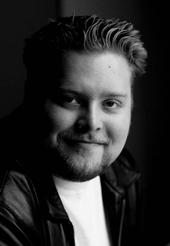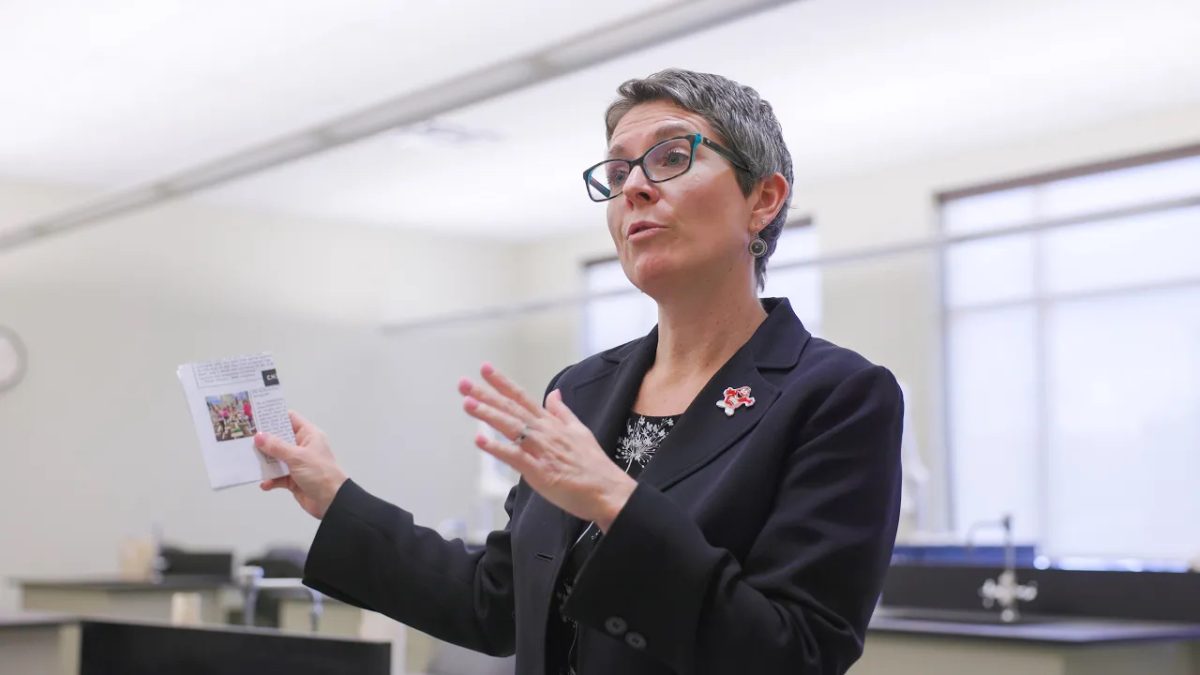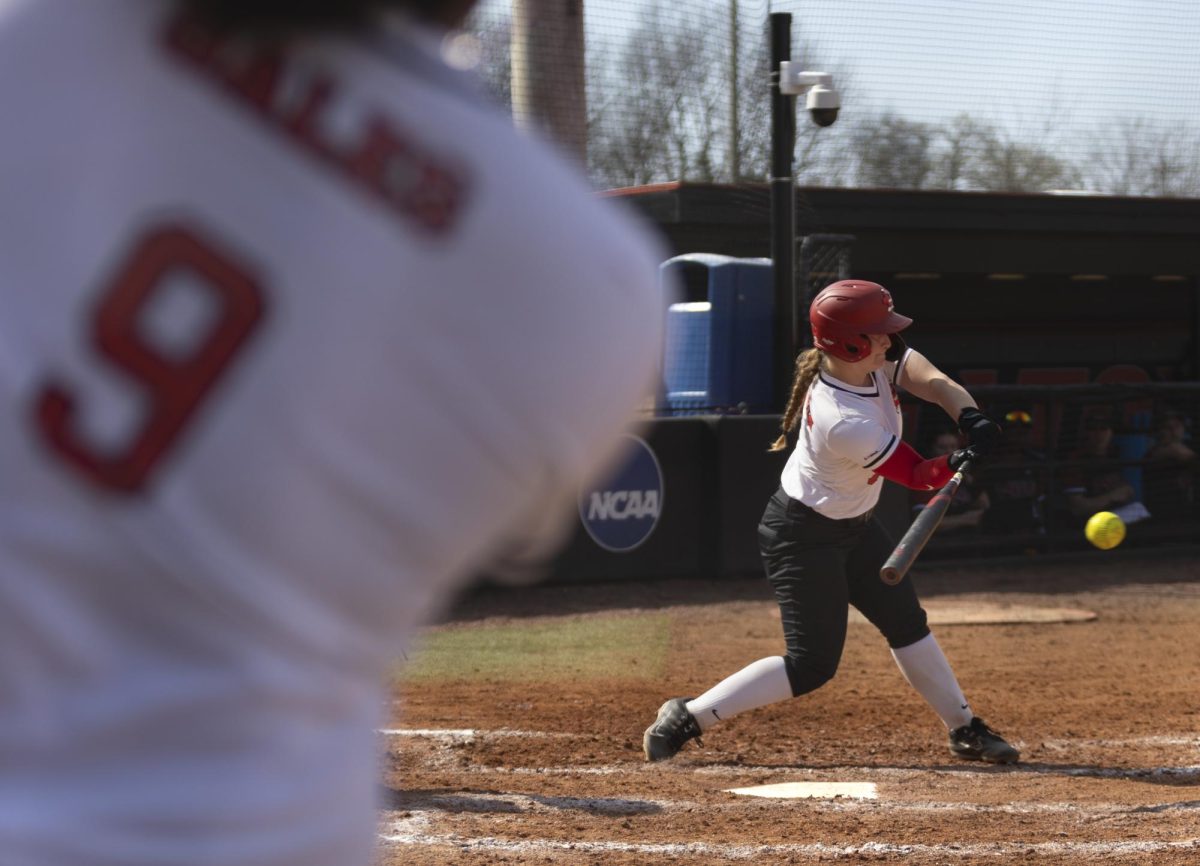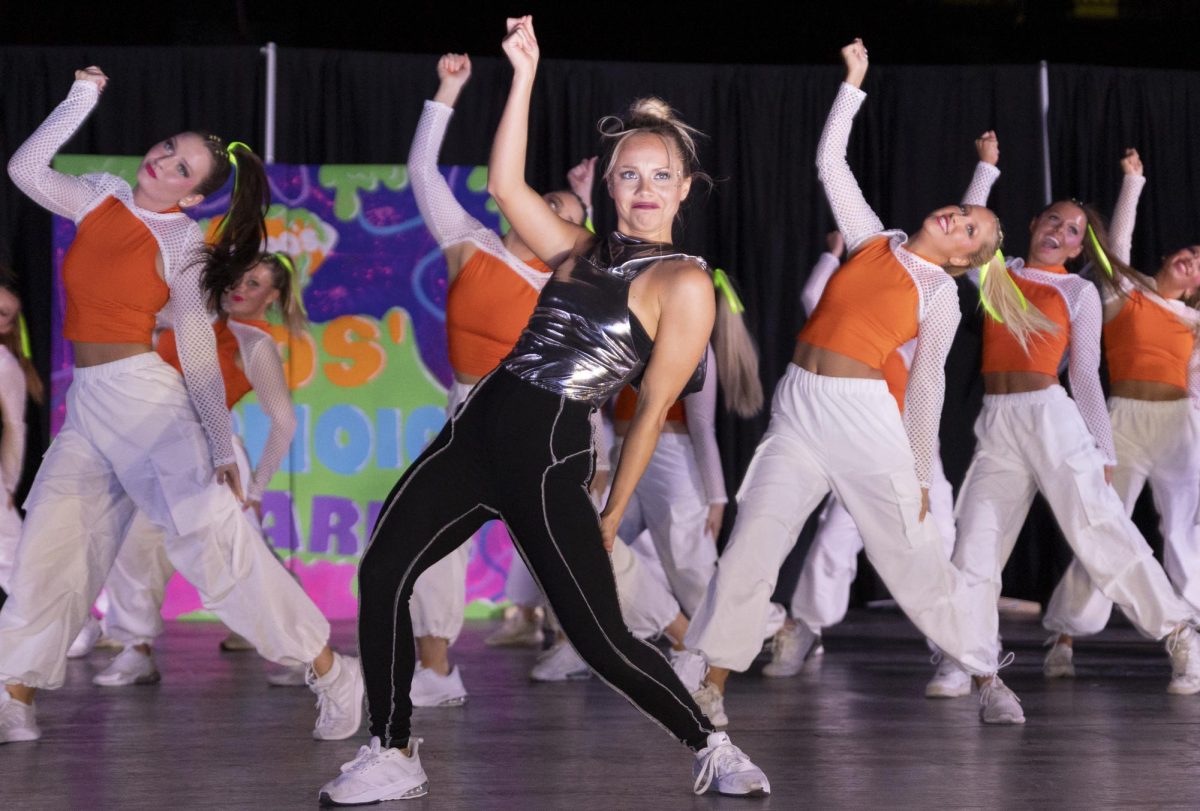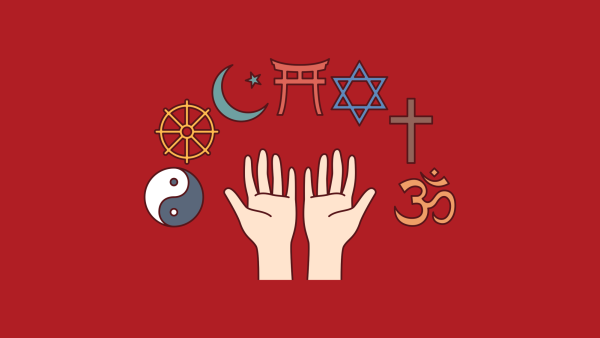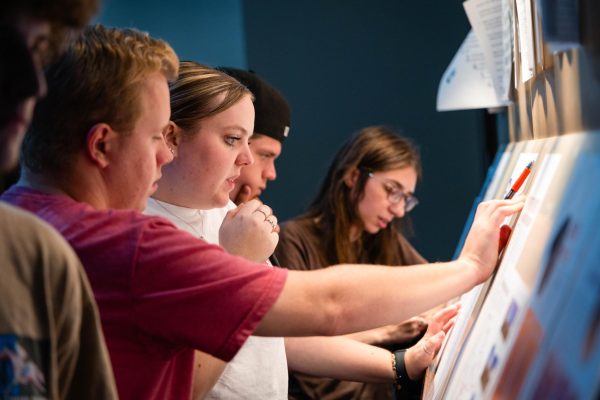Former Herald editor reflects on covering 9/11 at WKU
September 11, 2011
Originally published on the fifth anniversary of 9/11, former Herald editor Ryan Clark’s letter still carries its same meaning. The letter has been updated to reflect present employment for the former Herald editors mentioned but is otherwise unchanged from its original publication.
****
I hated our weekly business meetings.
But, as editor of the Herald, I had to go, so we could plan stories and talk about the financial situation of the student newspaper. The roster normally included myself, a few other editors, some advisers and some faculty. I guess the only really awful thing was the time they were held – 8 a.m. Ouch.
So, as I trudged up the Hill that Tuesday morning, I was already in a bad mood. I came to the doors of the Herald office and found a co-worker waiting for me. He asked if I knew what was happening in New York City.
I shook my head no. Together, we walked inside the newsroom to see the television.
Those were the last few seconds of normalcy, of triviality. Of bad moods.
After that, the world changed.
And as journalists and students, our lives changed in ways we are only now beginning to understand. We learned the delicate balance of reacting to the emotion of the moment while also keeping a clear head to deliver vital information to our community.
We learned how the biggest of events – a historical, global story – needed to be brought into perspective for a campus and its students.
More importantly, we learned how truly important a journalist’s job can be. And we learned that in the most trying of times, we could deliver when it was most needed.
But all that would come later. First, like everyone else, I had to watch. I saw the first tower come down, and all I could think was that I’d just seen hundreds of people die on live TV.
There were a few of us gathered around the television, and at that point, the gravity of the situation began to sink in. Tim Broekema, then-photo adviser for the Herald, immediately suggested a special edition of the newspaper for the next day. Student Publications director Robert Adams agreed.
At that point, I stopped watching television, and I did not pause to think about anything else other than the special edition of the newspaper that would come out the next day.
My emotional breakdown could wait. I had to make phone calls. One of the first was to Managing Editor Caroline Lynch Pieroni, who was at home watching the horror and wondering if the world was coming to an end.
“I think I was so overwhelmed in the moment I couldn’t cover it. I was stunned into inaction. I wasn’t thinking what it meant; I was reacting to what it was,” said Pieroni, who went on to work for The (Louisville) Courier-Journal. She’s now a member of the Litigation Department at Dinsmore & Shohl, focusing on first amendment and media law. “It was the battle between the human part of us and the journalist part of us – the personal and the professional. You had to shut off some of the emotion that was overflowing in you. You do use the emotion part of you in the job, but you had to hold a lot of it back. I had to process it later.”
Others felt the same way.
“I came to the office just before 9 a.m., in time to walk in, see a crowd gathered around the TV and then watch the first tower crumble,” said then-Herald Features Editor Erica Walsh, now a public relations specialist in the office of University Communications at Indiana University Southeast. “I didn’t understand what was going on. (Another staffer) took me into the editor’s office, sat me down in the chair, and told me very calmly that planes had hit the WTC and the Pentagon and that was why the tower fell. (Our editor) walked by shortly after that and said we were going to do a special section and to get ready. I think I was numb, I didn’t know what to do exactly, but I knew what had to be done.”
Designers, photographers and writers all came to the Herald newsroom, most without having to be asked. In the truest sense of the word, this was journalism – professionals reacting to the biggest thing that would ever happen in our lives.
“Before that, we’d been covering SGA meetings and on a really newsy day, a fire,” Pieroni said. “This was the most real, gut-wrenching event. Sitting in front of a television is a very passive thing to do. You feel as if there’s nothing you can do about it. But what we did – we were a part of it. In our own little corner of the world, what we offered to campus was really important. We were helping people cope. Other people probably didn’t have an outlet, but we could react and respond to it. We were a little tiny slice of what was going on in the world.”
We held an editors meeting and a staff meeting, and decided how we could localize this huge story. We would talk to those students who knew people in New York and Washington. We would talk to professors who had relatives in those places. We would talk with local stores, as well as with Western administrators, to see if shops or classes would close. Later we realized that students were eager to talk about what had happened, so we would create an editorial page for the next day’s section, complete with a student letter. We would create graphics to try and explain what had happened. And we used our photo connections to get some images from that day, which provided a horrific and memorable front page.
All the while, I refused to feel anything. Like many of the other journalists that day, I decided to work.
“I remember how lost and helpless everyone felt,” said then-Herald Design Editor Stephanie Gladney, who now works as art director at Time Out Chicago. “As the events unfolded and it became obvious to all of us that the country – and Western’s campus – would be at a standstill for the entire day, I found refuge in pouring myself into the work at the Herald. I arrived at the office sometime around 9:30 or 10 a.m. to start working on the extra edition. I think we were there until sometime the next morning. I skipped classes … the professors didn’t care considering classes that day only consisted of watching the news. And although the news was on constantly, it felt like the information was coming so slowly. We were all just waiting.”
But Gladney had other reasons to worry.
“My uncle was scheduled to be at the Pentagon that morning for a meeting and no one in my family could get a hold of him,” she said. “I was worried sick and felt like there was nothing I could do but wait for news. So when I got to the paper, I just jumped right into working on graphics. I think the entire staff just needed to feel like they were contributing something so that we had a purpose that day.”
When it became obvious the story was in Washington and New York, our photographers hit the road. A couple dozen traveled through the night to get to the story, and they ended up shooting alongside photographers from The Washington Post and The New York Times. In the coming weeks our photos were just as good as any other national paper.
“I was in a very unique situation – I had more photographers at my disposal than pretty much any major metro,” said then-Herald Photo Editor Robyn Larsen, who in 2006 was an editor at the Abilene Reporter-News. Larsen now teaches English as a Second Language in Seoul, South Korea. “As journalists, we just all went into work mode. As a photo editor I saw images that very few people got to see. Images that are haunting and there is a reason why the public didn’t see them. The truth and reality of the day is hard, but some things are just too much. I still have a very difficult time with photos of people jumping – and those were some of the photos that the public did see. We had so many photographers that headed up to NYC and Washington. Honestly, I was opposed to that idea, but I’m glad that they went. I heard some expert talking on TV about how this burden was too much for us to bear and that we had to share it with the world. I feel that many of our photojournalists helped to do that.”
At first, the special section was going to be four pages, but later, we realized we had more copy and pictures, so we tore up those dummy pages and added more. Eight seemed like a good number, with an Opinion page, a double truck to showcase photos around campus and eight stories. We actually held some stories, because, as Pieroni later said, we had to come out with another newspaper on Thursday. For three days that week, the Herald was a daily newspaper.
“There was no plan for what we were doing,” Pieroni said. “This was a day of no rules. Nothing like this had ever happened before so there was no blueprint. And look at what we did when there weren’t any rules and everything was crazy. I think we did a good job.”
Everyone pitched in. Brian Moore, sports editor that semester, was on the phone talking to administrators as a reporter.
“I interviewed the provost Barbara Burch, and we talked about how much money the U.S. was spending at the time on a missile defense shield. We talked about how no defense shield could have prevented passenger planes from becoming missiles,” said Moore, who went on to work at The Courier-Journal for three years. He’s now senior communications manager at Novartis Vaccines and Diagnostics in Boston, “It was a long day. Those happen in journalism. But on Wednesday, Sept. 12, 2001, Western students, faculty and staff had in their hands solid documentation of what had happened and how it affected our campus. It was a reminder for me, a journalist in training, that the media plays an important role in a democracy. And it was a democracy that we began fighting to protect on that very day.”
Walsh and others talked to students.
“I did several interviews with people who had been interns in NYC that summer, former Western employees who used to work at the WTC, a professor who was on sabbatical in Manhattan and a student who thought one of her family members was in one of the attacked buildings,” she said. “Those last two interviews are the ones that stick out the most. One of the photographers knew of a girl whose family member was missing and was thought to be in one of the buildings. They said she was willing to talk and would come to the office. I remember sitting in the office waiting for her to get there when I realized that I had absolutely no idea what to ask her. I felt like I was going to be intruding on a very personal, traumatic situation, one that I didn’t want to face. And I guess I was intruding. But she was great. She told me about her family member, how they couldn’t get in touch and how scared she was. She did it all so calmly, without panic or tears or anything. I remember thinking if she could be that strong, so could I. Hours later she found out that her family member wasn’t in the building and was safe. It was encouraging that in the middle of all this trauma, there was at least one happy ending.”
Later we felt it was appropriate for everyone to gather in the newsroom and have a moment of silence. Some people shared their grief. I, of course, did not. I wouldn’t. I couldn’t.
As the night wore on, the section came together. And people started to break down.
“I remember that as I was updating the death toll on one of the graphics that evening, I just started to silently cry,” Gladney said. “I couldn’t even see the screen anymore but I refused to stop working. In the journalism business, it’s easy to feel desensitized even more than the average American because we read, re-read, analyze, edit and obsess over all the gory details of every horrible tragedy that happens. You get to the point that murders, fires and accidents become merely words on newsprint. But on Sept. 11, 2001, it didn’t matter how many times I read the personal stories or cropped the heartwrenching photos, I just couldn’t stop seeing the pain and loss behind each word, statistic and pixel.”
And later that night, Gladney finally got word that her uncle was safe.
When the special edition was finished, the job wasn’t over. We still had to drive the paper to the printer around 3 a.m. When it was ready, we picked it up, loaded it into Mr. A’s truck and delivered it to campus. I still remember the pride I felt that I was able to help students in that way. Many students were waiting for class and were shocked to see us drive up and place Heralds in the racks.
It was a great feeling. But there was still no time to mourn. After all, we had another paper to put out Thursday. But all throughout the day, we received e-mails and letters telling the newspaper staff how much good it had done to inform the public in its time of need.
“When the paper came out the next day, I looked at it and felt like blood, sweat and tears went into it. Sadly, it did,” Gladney said. “I still have a few copies of our 9.11.01. It’s the only paper I kept from that day. It means more to me than any other issue that I ever helped put together. And as painful as it is to remember that day, I’ve never been more thankful to be a journalist because it gave me the power to do something while so many had to wait for something to be done.”
“I think I kept busy that day because I knew if I stopped I would be forced to think about what happened and accept it,” Walsh said. “I don’t think I was ready for that acceptance yet. I didn’t cry that day. I was going on pure adrenaline and emotion. The next day I got back to my dorm room and started crying when I saw (my roommate) sitting on her bed watching the news on TV. All I could think about was how what just happened was not supposed to happen here. Not to us. Then I remember thinking I had to go back to the office, because we still had work to do. We had more papers and more stories to put out. Yes, we were doing our jobs, but we were also surrounding ourselves with the support we needed to get through it.”
I kept going. We put out more great papers the rest of the week, and in following weeks, as our photographers continued to send back powerful images from Ground Zero and Washington. But I still didn’t grieve. I think I may have buried the feelings so deep I may never find them. Others agreed.
“Because we were so busy working, I didn’t get to just sit and watch like most people did and I think because of that it didn’t fully hit me until days later,” Larsen said. “I didn’t get to cry about until much later. Even now, when I went to see (the new movie World Trade Center), I realized how different my experience was. I’m still not sure I’ve properly grieved.”
Even now, as I think about it, I know I haven’t come to terms with what happened on 9-11. I’m fascinated to watch coverage of it still because I stopped watching TV that morning and went to work. But even though emotionally, I may have hidden my feelings, I think I sacrificed them for the good of the job. What we did as student journalists that day was important, and I would not have wanted to be anywhere else when our world came crashing down, nor would I have wanted to work alongside any other group of people. The hard work the staff put in that day still amazes me, and if any of you are reading this today, thank you so very much for all of your effort – both to the job, and to the support you showed for all of us on our little newspaper staff. The same is to be said for our advisers and office staff. Every person did something important and right that day, because, as others have said, it was the only thing we could do.
Hmm. Maybe someday I’ll get that emotion out after all.
“It feels kind of weird to have people ask where you were and what you were doing on Sept. 11,” Walsh said. “I don’t really feel like it happened five years ago. But whenever the anniversary comes up, I think about what we did that day, and that night, and I’m proud.”
Me too.
****
Ryan Clark is now web editor at Northern Kentucky University and teaches classes in media infomatics. Clark also contributes to the Kentucky Enquirer.
The Herald’s 9-11 special section went on to win several state and national awards, including ones from The Associated Collegiate Press and the Kentucky Press Association.

